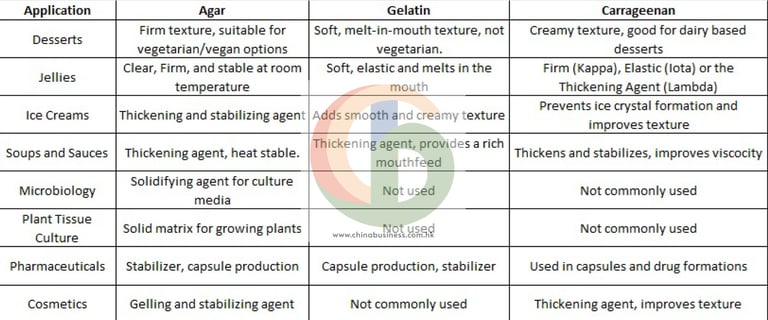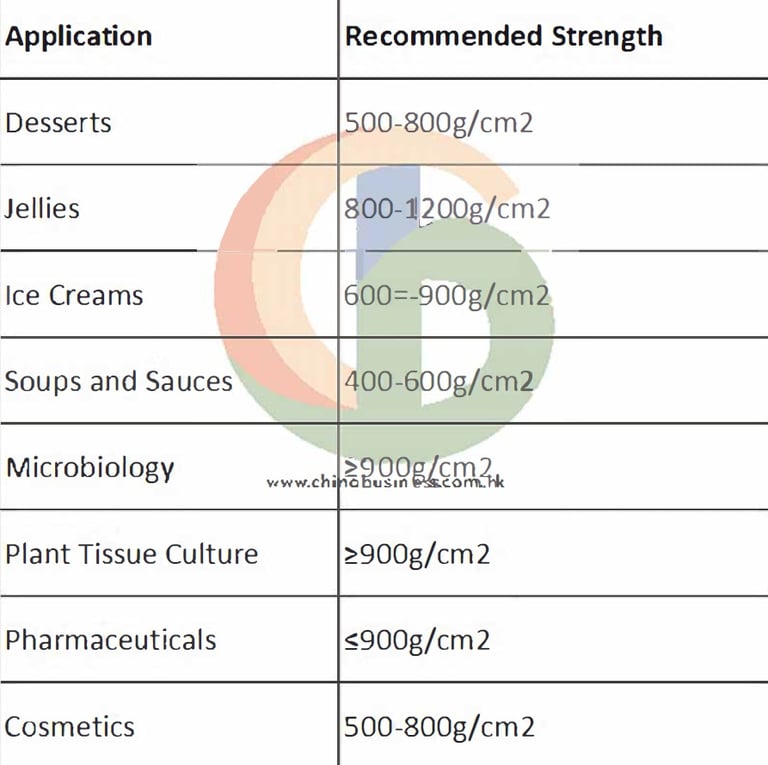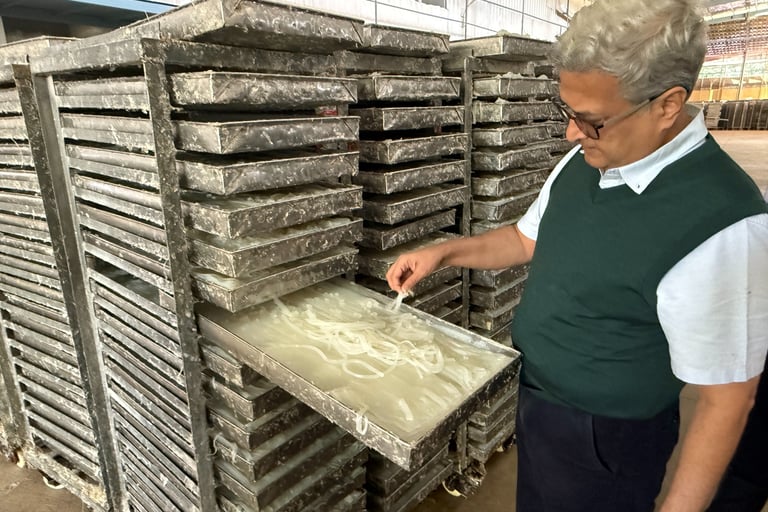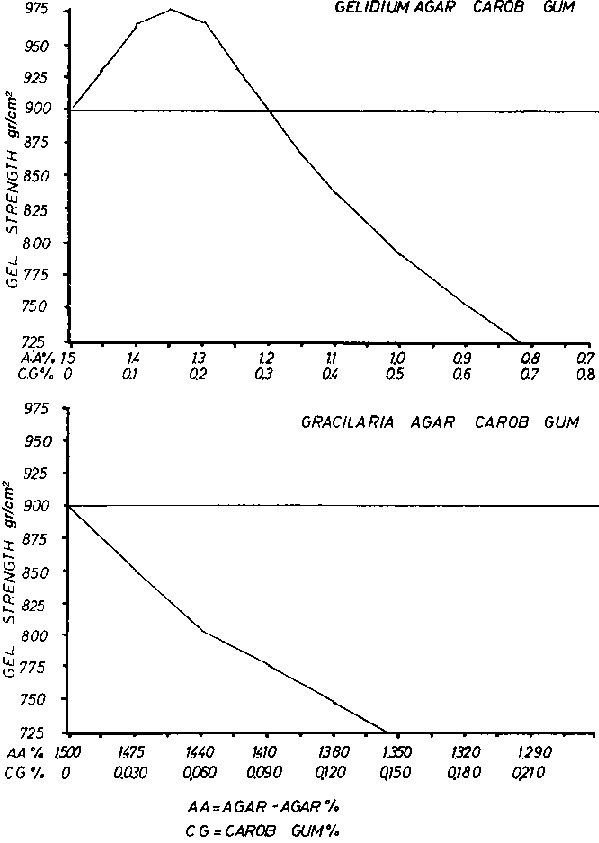Understanding Agar-Agar: Qualities, Strengths, Applications, and Comparisons
Agar Agar, a gelatinous substance derived from red algae, has been a staple in both culinary and scientific applications for centuries. Known for its unique gelling properties, agar agar is a versatile ingredient with a wide range of uses. In this blog, we'll delve into the different qualities of agar agar, how to measure its strength, the specific advantages and disadvantages of each strength, and its various applications.
PRODUCT FACTSHEETAGAR AGAR (CHINAGRASS)
2/16/20253 min read


Different Qualities of Agar-Agar
Agar agar is composed of two main components: agarose and agaropectin. Agarose is responsible for the gel-forming properties, while agaropectin provides flexibility and modulates the gel's characteristics. The quality of agar agar can vary based on its source and processing methods.
Agar agar, a gelatinous substance derived from red algae, has been a staple in both culinary and scientific applications for centuries. Known for its unique gelling properties, agar agar is a versatile ingredient with a wide range of uses. In this blog, we'll delve into the different qualities of agar agar, how to measure its strength, the specific advantages and disadvantages of each strength, and its various applications.


Comparative Applications: Agar, Gelatin, and Carrageenan
Applications of Agar-Agar
Agar agar's versatility makes it a valuable ingredient in various fields:
Culinary: Used as a vegetarian alternative to gelatin in desserts, jellies, and sauces.
Microbiology: Essential for creating culture media to grow bacteria and fungi.
Plant Tissue Culture: Provides a solid support for plant growth in tissue culture media.
Pharmaceuticals: Used as a laxative and to create capsules and tablets.
Cosmetics: Acts as a thickener and stabilizer in creams, lotions and shampoos.
Strengths of Agar-Agar
The strength of agar agar is typically measured in terms of gel strength, which is expressed in grams per square centimeter (g/cm²). The gel strength is determined by the concentration of agar and the temperature at which it is cooled.
Recommended strength for various application is as follows:-
Test Methods for Measuring Agar-Agar
The strength of agar agar is typically measured in terms of gel strength, which is expressed in grams per square centimeter (g/cm²). The gel strength is determined by the concentration of agar and the temperature at which it is cooled. Here's a step-by-step informal method to measure agar gel strength:
Prepare the Agar Solution: Weigh 1.5 grams of agar powder and dissolve it in 100 ml of distilled water.
Boil and Cool: Boil the solution and pour it into a mold. Allow it to cool and set at room temperature.
Measure Gel Strength: Use a texture analyzer to measure the force required to depress the gel surface by a specific distance.
Below are some internationally accepted laboratory test methods for measuring gel strength:
ASTM 6376-99 - Bloom Test Method, 1999.
ISO 1628-1:1998 - Dynamic Viscometry Method, 1998.
252, 253 and 621 - OECD Guidelines for Testing, 2024.
These methods are widely recognized and used for assessing the gel strength of various substances in different industries.


Contact us for your needs of Agar Agar (Chinagrass - Falooda) requirements - Strips, Powder, Sticks in bulk packing (10-25kg) or OEM/White Label for retail / catering sizes all the way from 10g to 1kg with customized strength.
More details and specifications of Agar Agar are here.




"Source FAO Fisheries Technical Paper 288"
Agar Gel Solutions Agar Carob Gum
Tel: +852 25172316
© 2024. All rights reserved. All information on this site is without any contractual, financial or otherwise any other liability. For binding information, please contact us and include your concerns / requirements in enquiry, quotation, contract and shipping documents.
5/Fl. Qualipak Tower, 122 Connaught Road West
Hong Kong.
China Business Ltd. T/A Orient Resources Company


Fax: +852 25178741
